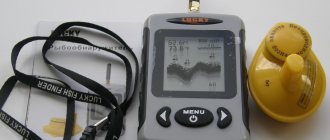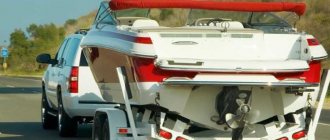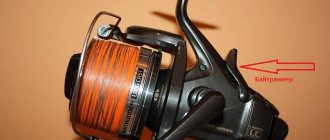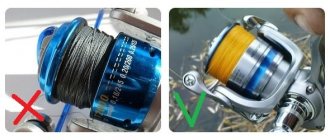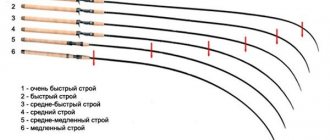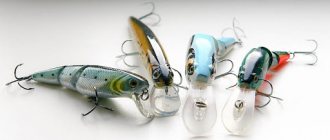When buying an electric motor for a boat, many people for some reason forget that it also requires a battery. Indeed, an electric motor will not float on its own; it requires a power source.
Some may happily remember that they have an unwanted car battery lying in the garage. However, we dare to disappoint them; a boat motor requires a special traction battery.
Starting battery
The starting battery, the one used in cars, is an auxiliary device. It is used to create a powerful single charge, starting a fuel engine, such as a car or motorcycle.
At the same time, its negative qualities are considered to be capriciousness in service. Since most batteries operate on a lead-acid operating principle, the charge should not fall below 20%, otherwise the battery capacity will drop. The so-called sulfatization of the electrodes occurs.
This happens when the lead involved in current transfer, in the absence of a charge, enters into a chemical reaction with the plate, thereby “drying out” and hardening.
Prolonged discharge can completely kill the battery. Also, a car battery is afraid of low temperatures. In winter, it needs to be periodically warmed up indoors. It is not suitable for long-term current maintenance.
Li-ion batteries for boats
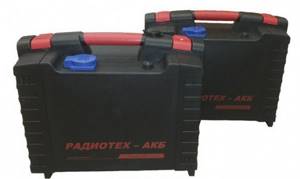
These devices offer increased energy intensity, low weight and can withstand up to 3 thousand charge/discharge cycles. Of course, batteries of this type are quite expensive, but they are worth it! Having purchased such a device for your high-speed boat, you will not be disappointed: for several years the device will delight you even with intensive use.
Main types of traction batteries
Speaking about the main types of traction batteries for fishing, we can distinguish 2 subtypes of lead-acid type: AGM and GEL, but first the lead-acid type.
This type of battery has lead plates located in a plastic or glass box, which are filled with an acidic electrolyte. In addition to the fact that the lead-acid type is widely used in starting batteries, it is also represented by traction batteries. The disadvantages are still the same: a high probability of failure.
However, this technology has been significantly improved by creating several subtypes:
- AGM (Absorbent Glass Mat - Absorbed glass fiber). Unlike the classic lead-acid battery, this technology is made not using liquid, but using compressed porous glass fiber. The use of acid here is minimal, which means that the possibility of sulfation of the electrodes is significantly reduced. Among other things, this type of battery is a maintenance-free type, that is, there is no need to fill it with electrolyte. The housing is made hermetically sealed and does not allow acid to escape. At the same time, the possibility of corrosion is prevented. However, there are also disadvantages, such as: sensitivity to overvoltage, heavy weight.
- GEL . Another type of battery for a boat electric motor, made on a lead-acid basis. A special gel-like liquid is poured into its body, which eliminates the possibility of leakage. Just like AGM, this type of battery is called maintenance-free, that is, it does not require any maintenance. And although this type of battery is expensive and has a slightly smaller number of charge-discharge cycles, it is recommended for outboard motors.
Selection and operation of a battery for an electric boat motor
Many fishermen and hunters nowadays acquire boats. In the simplest version, inflatable boats are purchased. Those who have more money buy small sea and river vessels. All these boats, boats and yachts are equipped with motors. There are, of course, those who row, but there are fewer and fewer of them. Many small boats are equipped with outboard engines. These can be gasoline and diesel internal combustion engines (ICE), as well as electric motors. Normal operation of all types of outboard motors is impossible without a normal battery. In addition, the battery on the boat ensures the operation of electrical appliances, navigation systems, lighting, etc. Therefore, in this article we will talk about the criteria for choosing a battery for electric boat motors and internal combustion engines.
Requirements for a boat motor battery
Before talking about the requirements for a boat motor battery, you need to say a few words about their types. Without an electric motor, trolling fishing, which is carried out close to the shore, is impossible. Using an internal combustion engine, it is impossible to achieve a boat speed of 3-5 kilometers per hour. But this can be done without any problems by an electric motor.
Advantages and disadvantages
Having considered the 2 main types of batteries for a boat, let’s go through their characteristics in more detail and identify their strengths and weaknesses.
So, the advantages of AGM technology
- Affordable price and large selection. Batteries of this type, as a rule, are widely represented in the entry-level price range, however, AGM batteries are also present among expensive models.
- Long service life. If you go fishing every weekend for a year, the battery should last for at least 7 years. The number of charge-discharge cycles is on average more than 800.
- The seal allows the battery to be charged without releasing hazardous substances.
- Possibility to place the battery on its side. Another useful feature is that it is sealed; it is not recommended to turn the item upside down.
- No need for battery maintenance.
Here are its disadvantages
- Inability to store the battery in a completely discharged state. Unlike GEL, the depth of discharge for glass wool type batteries should not exceed 20-30%.
- Reducing stress in cold weather. In cold weather, the battery will produce slightly less voltage. This may affect the efficiency of the motor.
Now let's look at the advantages of GEL
- Lower discharge level when idle. If a charged battery is not used in any way, after a month you can expect a discharge of no more than 5%, which is a good indicator.
- Deep Cycle ability.
- Resistance to extreme temperatures. From -30 to + 60.
- Improved vibration protection. Useful during strong waves.
- Even longer supply of cycle hours. With certain models of gel batteries you can charge the device more than 1000 times.
In general, all lead-acid batteries have common disadvantages.
- Heavy weight. Approximately about 30 kg, sophisticated models can weigh tens of kilograms more.
- Sensitivity to overdischarge. It should not be more than 25%.
- Not environmentally friendly. After use there is a need for special disposal.
Popular manufacturers and their features
The most famous brands of boat motors and batteries are Deka and Minn Kota. Let's consider several models:
- Deka DP24 is a popular inexpensive traction battery model. Average price 8500 rub. It is positioned as a deep-discharge battery, but is made using AGM technology, which imposes limitations - it is sensitive to low temperatures and has a limited number of cycles. At a voltage of 12 volts, the volume is about 85 Ampere/hour. Does not require additional repairs. A good choice for beginners. Suitable for inflatable boats
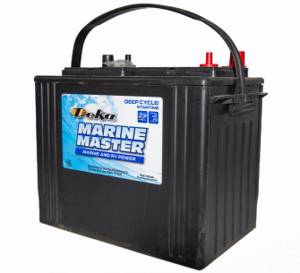
- Minn Kota MK-31-GEL is a sealed gel battery for a medium boat or small yacht. Capacity 105 amp/hour. Has full deep discharge function. Most often installed on powerful boat electric motors.
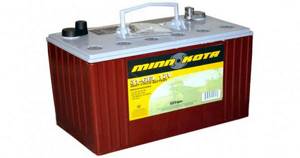
- Deka GEL 8G8D is a premium battery. The average price is about 43 thousand rubles. The power is quite enough to electrify medium-sized yachts. It is rarely installed on boats due to its size and weight (in running order, more than 70 kg). With a current of 1000 amperes, it has a capacity of 225 A/h.
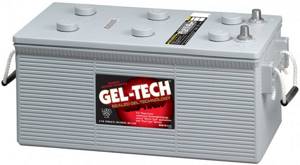
Traction batteries vary in technical characteristics. Therefore, we recommend not to rush into making a choice. You can glean a lot of useful information by watching reviews and educational videos on this topic. Here are some examples:
Features of operation
In fact, the recommended AGM or GEL batteries do not require any special care. Both batteries are maintenance-free, which is their great merit.
However, this also means:
- Prohibition on opening. A large amount of oxygen will cause irreparable damage to the plates.
- The device should be charged no more than the size of its capacity allows. Use charge limiters.
- Be aware of lead toxicity. If the battery somehow gets holed, which is extremely rare, you should throw it away, but at designated recycling sites. This heavy metal is very dangerous.
- Don't forget about the low battery level. If it is below 20%, you should recharge the device; in the case of liquid electrolyte, this is critical.
- Do not use or store the battery at temperatures below -20°C or above +60°C.
What should you pay attention to when choosing a battery for an electrified watercraft?
Of course, any owner of an electric boat needs to know the criteria for choosing a battery for it, and here, first of all, you need to pay attention to the type of battery, as well as its voltage. In addition, you need to know whether the electric storage device is traction! This can be determined by the inscription on the case. If the gadget is intended for traction use, then its marking should contain the following designations: PzS and PzV.
Users install traction equipment on boats with a voltage of 12 or 24 V, so pay attention to this parameter.
What about capacity? Fans of “water procedures” take into account the power of the electric power unit installed on their watercraft when choosing. The power of an electric motor for a boat can often be expressed in pounds, and its approximate ratio to the capacity of the electric storage is one to one. That is, for every pound of electric motor power, there will be one amp of battery capacity.
Let's take as an example the WaterSnake T18 electric motor, specifically designed for use on boats. Its 18-pound capacity will drain a 55-capacity battery in about three hours!
Rating of models with prices
When choosing a traction battery, you should look at its capacity (Ah), durability (charge cycles), minimum voltage (V) and temperature conditions (°C).
The entire traction battery market can be divided into 3 categories:
- From 4 to 12 thousand rubles. Such batteries are quite good, they have an average capacity (from 70 to 100 A/h), resistance to vibration, and among them there are deep discharge models. Regarding technology and type, there are few gel batteries in this price range. These are mainly AGM models. And here you should be wary of the so-called calcium batteries. This is the same lead-acid battery, only with the addition of calcium as an impurity to the lead. There is an opinion that after a deep discharge, this type of battery cannot be restored. Therefore, if you plan to completely discharge your device, it is better to look into the next price category
- From 12 to 20 thousand rubles. Gel models are already included here. These are the ones we recommend for boat electric motors. They are durable, stable at the lowest temperatures, and produce good voltage, which is important for motor power. Let us separately note their capacity – from 100 to 150 A/h. But, if you are planning a long fishing trip and want to take a model with improved capacity, models starting from 20 thousand rubles will suit you.
- From 20 to 40 thousand rubles. These are the top batteries for electric motors on the Russian market. They are distinguished by a large starting charge, almost comparable to starters, and a huge capacity volume (from 150 to 245 A/h). And some of them, in addition to everything, contain reserve capacity.
Deep cycle batteries for electrified boats
The traction electric storage device for watercraft must be resistant to multiple deep discharges. To avoid problems, you need to install a rechargeable battery with a capacity of 70-100 Ah and a voltage of 12 V on the water device. Which batteries are the most resistant to deep discharge when used on surface vehicles? Take Li-ion batteries and you won't go wrong! This equipment is relatively expensive, but at the same time, it is the most suitable item for providing power to a heavy boat.
Available gel units that, in addition to excellent tolerance to deep discharges, are relatively lightweight and completely sealed can serve you well.
Charger
Well, now that we have familiarized ourselves with the main characteristics of batteries, examined models of different categories, let's talk about the charger.
Due to the fact that AGM and GEL batteries do not like overload during charging, there is a special charger for each device.
It helps to quickly restore charge and most importantly takes into account the required battery capacity (for example, for batteries from 15 to 130 A/h). The charger contains an indicator and compensates for the falling voltage.
A charger today costs from 5 thousand rubles, weighs about a kilogram and has medium-sized dimensions. If it is not there, you can use your car, but you need to remember that the highest acceptable voltage for a GEL battery is 13.9 V, and for an AGM 14.4 V.
However, these figures strongly depend on the ambient temperature; the lower it is, the higher the voltage (within a few tenths) can be applied.
Can car batteries be used on boats?

But these products are categorically not recommended for installation on surface electric vehicles: they are very sensitive to deep discharge and can be completely destroyed even by one-time use as a traction device. In addition, the batteries being serviced are not sealed, which can lead to an unpleasant spill of electrolyte that can easily corrode the metal boat hull.
Classification of batteries for outboard motors
Batteries for PVC boats come in the following types:
- Lead-acid.
- AGM and GEL.
- Lithium-ion.
Advantages and disadvantages
Lead-acid batteries are considered the most suitable for PVC boats. These models are maintenance-free and do not require adding water. The main disadvantage is the loss of capacity due to frequent full discharge.
For AGM and GEL products, deep discharge is not dangerous. Their task is to provide starting current for the motor even when completely discharged.
The advantages of such units:
- fast charging;
- absence of gases;
- do not require maintenance.
Flaws:
- no ability to recharge;
- high price.
Lithium-ion batteries with overcharge protection are becoming very popular. The model is constantly being improved.
The advantages include:
- lightness and compactness;
- low percentage of wear;
- fast discharge;
- energy intensity;
- no need for maintenance.
The downside is the high price, which is approximately 20,000 rubles.
